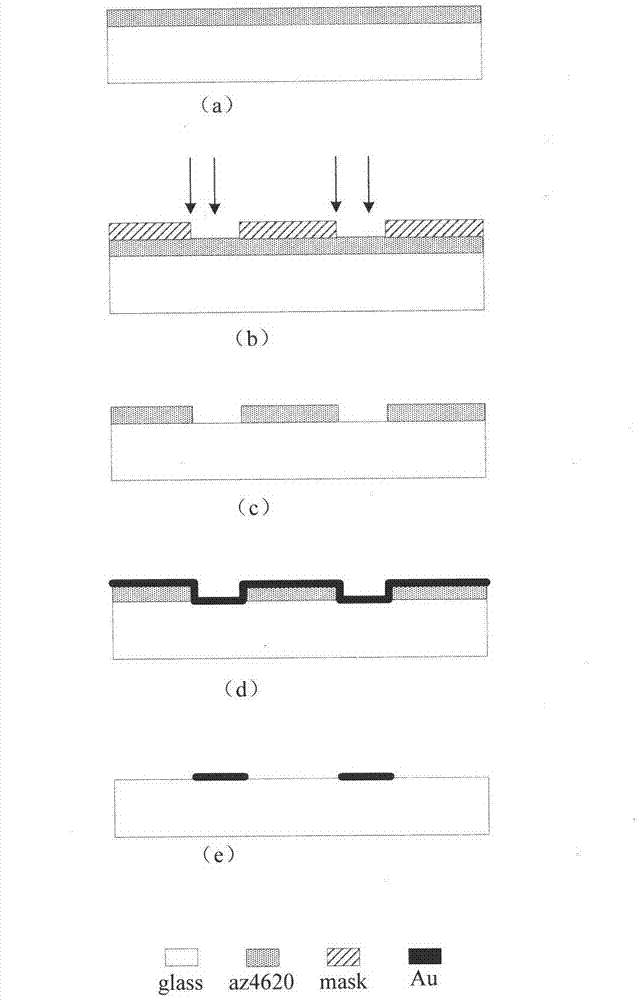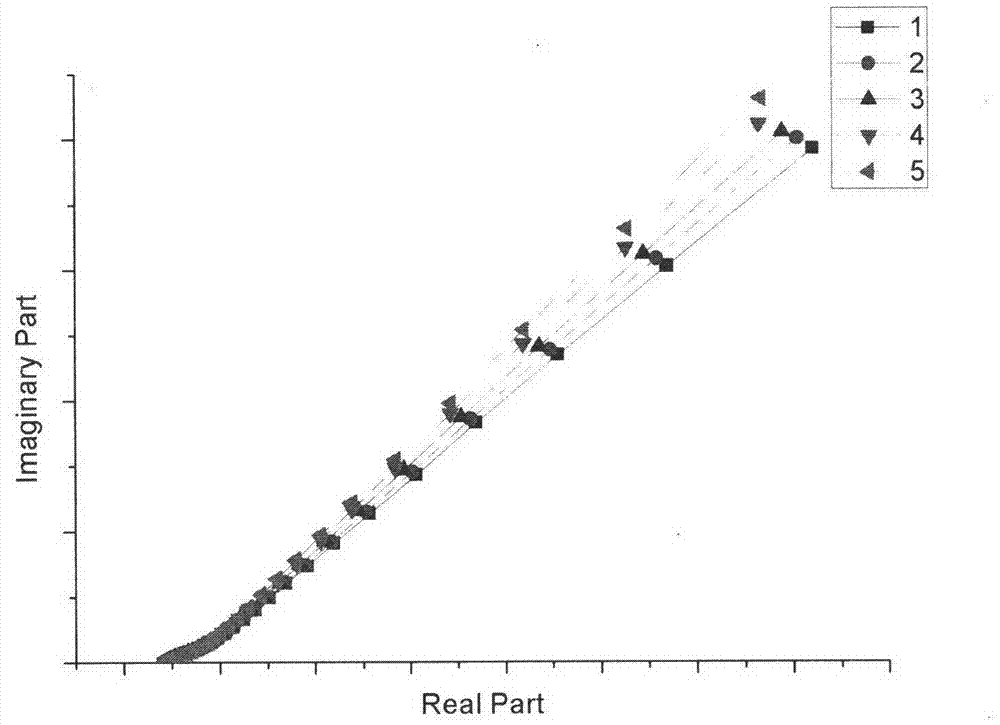Data analysis method for electrical impedance type quick bacteria detection sensor
A detection sensor and data analysis technology, applied in the direction of material impedance, can solve complicated, time-consuming and labor-intensive problems, and achieve the effect of reducing interference
- Summary
- Abstract
- Description
- Claims
- Application Information
AI Technical Summary
Problems solved by technology
Method used
Image
Examples
Embodiment 1
[0020] The making of interdigitated electrode in step 1 of embodiment 1
[0021] An interdigitated array (IDA) is a pair of electrode arrays interdigitated with each other. The distance between the finger-shaped sub-electrodes is in the order of microns or nanometers, and a small amount of liquid to be tested can be used to obtain desired results. As the size of the electrode decreases, the frequency corresponding to different impedance regions decreases accordingly, and the change of impedance before and after bacterial growth can be measured at a lower frequency. Compared with a simple counter electrode, the IDA electrode has a smaller size and a larger surface area, so that bacteria have a higher chance of adhering to the electrode surface, and the measurement task can be completed in a shorter time with less liquid.
[0022] A patterned Au metal thin layer is formed on the glass sheet using the lift-off process. The schematic diagram of the structure is shown in figure 1...
Embodiment 2
[0023] Influencing factors of embodiment 2 electrode parameters
[0024] The parameters of the electrode are critical to testing the sensitivity of the electrode system. The electrode material, thickness, interdigital logarithm, and the ratio of interdigital spacing and width of the electrode will all affect the sensitivity of the test system. Experiments have found that the strength of the signal is related to the surface area of the entire electrode array, and the reduction of the electrode width will increase the signal-to-noise ratio.
[0025] The thickness of the sputtered Au layer is 0.1um, the relationship between the finger electrode width and the sensitivity is tested under the conditions that the ratio of inter-finger spacing to width is 1:1, the number of interdigital pairs is 20, and the length of interdigital electrodes is 2mm. Set the width of the finger electrode to 20um, 25um, 30um, 50um, 100um, 200um. The experimental results preliminarily prove that under...
Embodiment 3
[0030] When the measuring electrode is added to the sample, the electric double layer at the interface between the electrode and the solution is generally equivalent to a capacitor, called electric double layer capacitance, so the frequency response characteristics of the double layer capacitance described above are not consistent with "pure capacitance" , there is a "diffusion effect". The equivalent element is the constant phase angle element (CPE) Q. The equivalent model of this electrode testing system is the series connection of the equivalent constant phase angle element Q and the equivalent resistance R. Its impedance is:
[0031]
[0032] Y is the parameter of the equivalent element Q, its dimension is Ω -1 cm -2 ·s -n ; n is a dimensionless index, and 0 And the line that intersects the real axis at R (such as image 3 shown).
[0033] Although the frequency response characteristics of electric double-layer capacitance and "pure capacitance" have greater or le...
PUM
 Login to View More
Login to View More Abstract
Description
Claims
Application Information
 Login to View More
Login to View More - R&D
- Intellectual Property
- Life Sciences
- Materials
- Tech Scout
- Unparalleled Data Quality
- Higher Quality Content
- 60% Fewer Hallucinations
Browse by: Latest US Patents, China's latest patents, Technical Efficacy Thesaurus, Application Domain, Technology Topic, Popular Technical Reports.
© 2025 PatSnap. All rights reserved.Legal|Privacy policy|Modern Slavery Act Transparency Statement|Sitemap|About US| Contact US: help@patsnap.com



